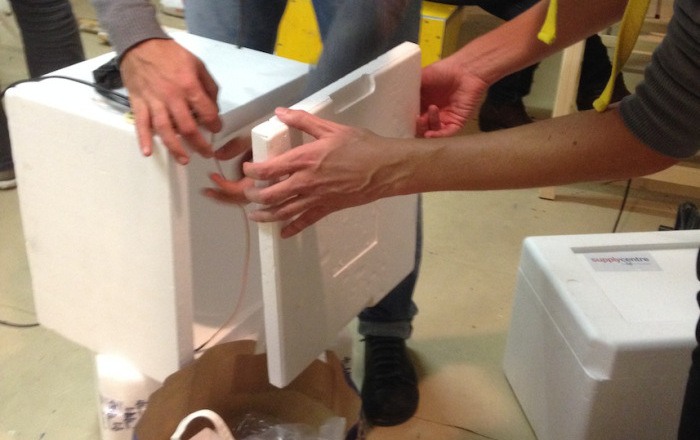

Allow a minimum of forty eight hours for the temperatures to stabilize before adding eggs. Plug the heat source into the temperature controller, and the controller to a convenient power outlet. It also serves to help maintain temperatures during power outages. Step Eightīy adding a fairly large volume of material directly over the heat source you help to eliminate the severity of temperature fluctuation caused by simply opening the door. The crisper drawer was then filled with a combination of gel packs (photo 13) and water bottles. The shelves were reinstalled at this point to check for interference with the wires. I have since re-taped the wires using the foil tape. The wires were then taped temporarily with electrical tape to keep them in place until I was sure I was satisfied with their routing.

The heat tape was then installed on the bottom of the compact refrigerator, beneath the crisper drawer, using foil tape. I then covered the connections with electrical tape for added safety. Next I connected the power cord to the flexwatt heat tape using the clips and insulators.

I found mounting the temperature probe from the thermostat where the temperature probe from the refrigerator was originally located to be convenient for me. I put a little petroleum jelly on the wires to help them slide more easily. Things get a little tight here, so be patient and careful not to break any wires.
#DIY INCUBATOR PROFESSIONAL#
Cutting the lines and removing the compressor should only be done by a qualified professional who can remove the refrigerant in a safe and legal manner.Īfter removing the shelving for better access, I ran the wires for the heat source and temperature probe through the drain hole near the back of the refrigerator. I did not remove the compressor from the refrigerator. I have also removed the excess wiring to the compressor and internal controls to clean things up. I then cut the wires and discarded the cord as it was no longer needed. You can try hotel and restaraunt supply houses, they. The hardest part in my opinion is going to be finding the fridge itself. This is the second one I have built out of reach-in style fridges. So, I figured I would share how I build mine.
#DIY INCUBATOR HOW TO#
I began by removing the clamp holding the power cord on the back on the refrigerator. We get a lot of questions on the forum about how to turn fridges into incubators.

*electrification kit composed of wafer thermostat with duplex outlet, pilot light, service cord, and 160-watt flexible glass-covered heating element.This article is an example of how an incubator can be simply made by using an inoperable compact refrigerator. Small porcelain knobs for heating element Printed diagrams are shown in MCES Publication 1150, Avian Embryo that is available through your local County Agent Office. The diagrams shown will guide the construction of the unit. Gather all equipment and supplies listed below together before starting construction. The following illustrations are designed to guide the reader through the construction of a small plywood and glass incubator that will accomodate about 100 chicken eggs.īasic woodworking tools are required required for construction.


 0 kommentar(er)
0 kommentar(er)
